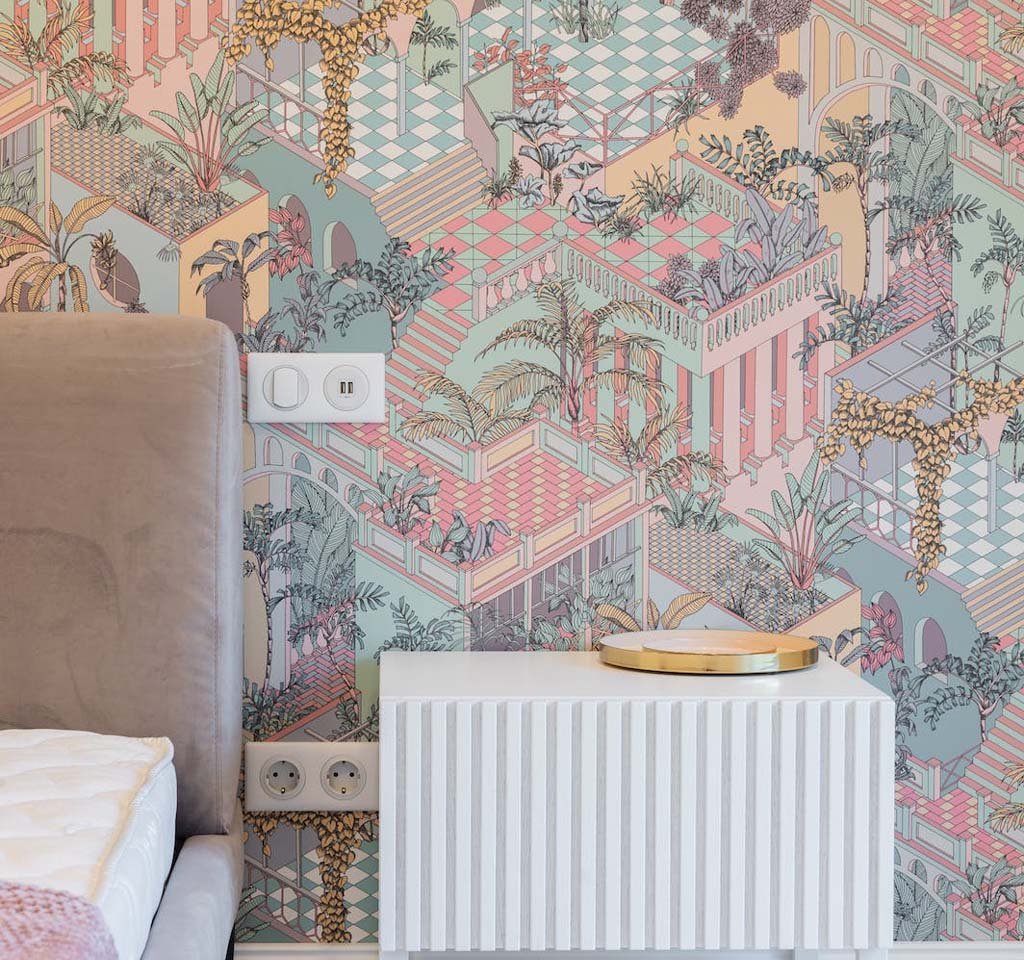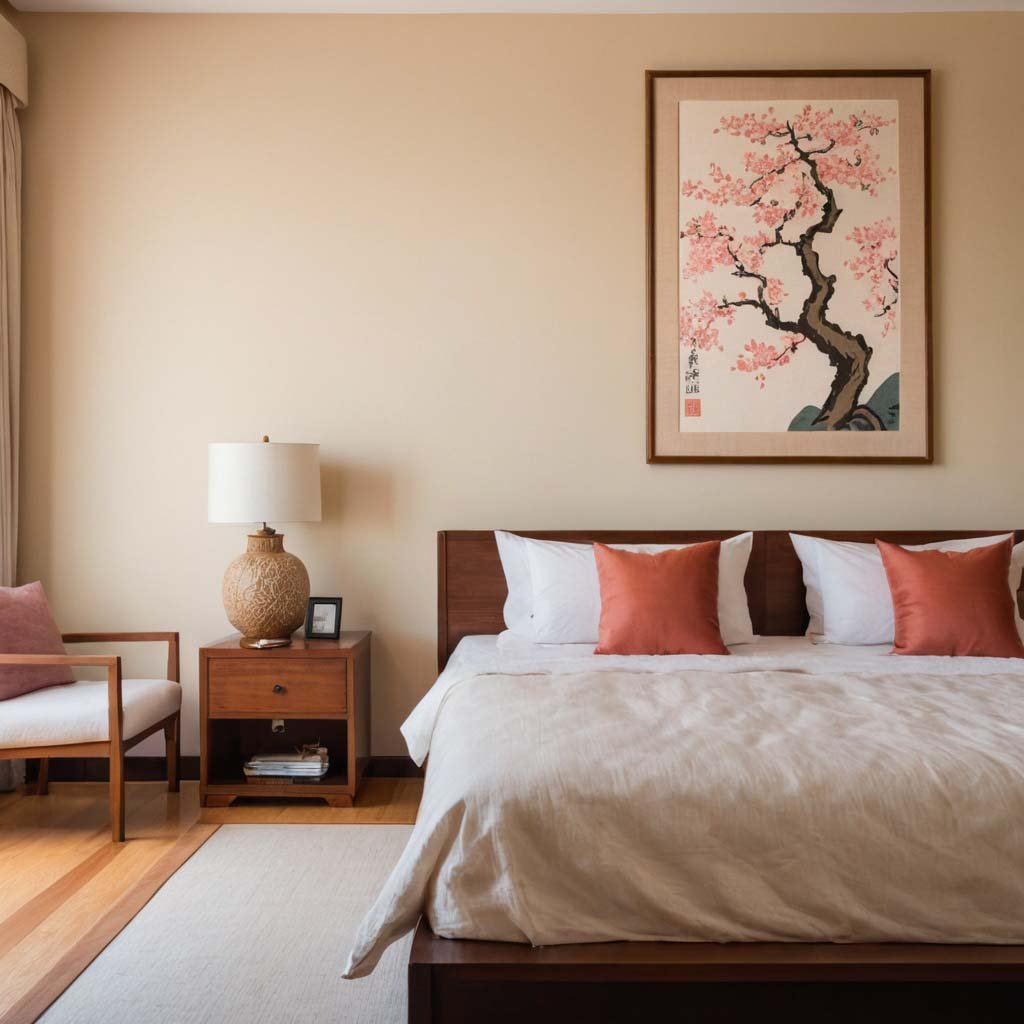Geometric Wall Art: The Perfect Addition to Any Modern Home
January 30, 2024 | by Marvin Morar
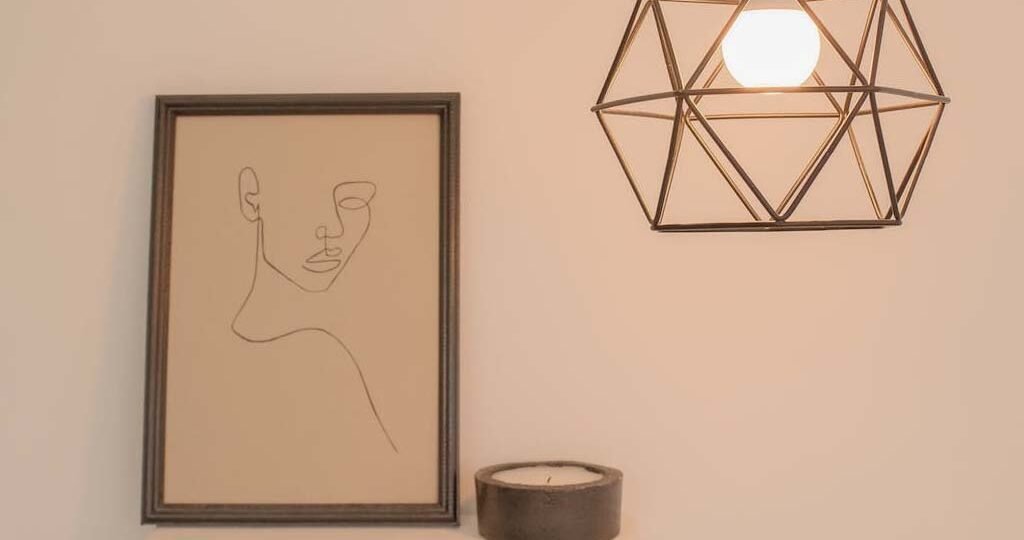
Contents
Introduction to Geometric Wall Art
Geometric wall art is a form of artistic expression that utilizes geometric shapes, patterns, and designs to create visually stunning pieces that can be displayed on walls. It is a unique and captivating way to enhance the aesthetics of any space, adding depth and dimension to the room’s overall decor. The history of geometric art dates back centuries, with ancient civilizations such as the Egyptians and Greeks incorporating geometric patterns into their architecture and artwork.
In modern times, geometric wall art has gained immense popularity in home decor. Its rise in popularity can be attributed to several factors. Firstly, people are increasingly drawn towards minimalist and contemporary design styles that emphasize clean lines and simplicity. Geometric wall art perfectly complements these styles by offering sleek and structured designs that add a touch of sophistication to any space.
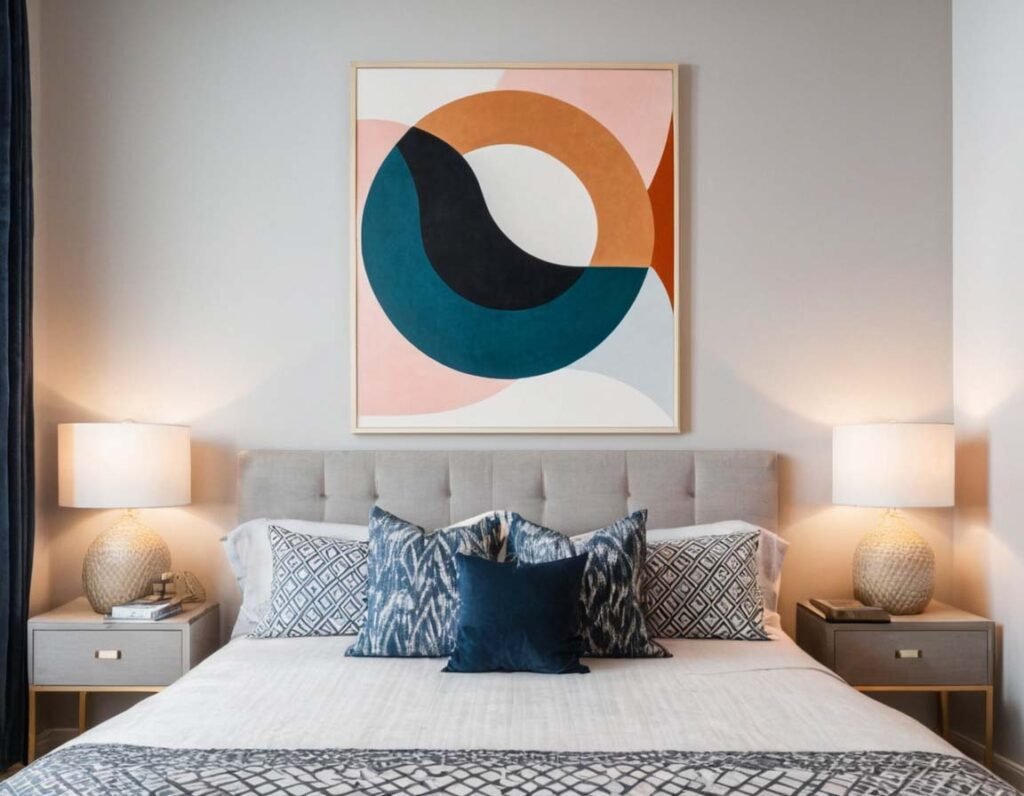
Furthermore, social media platforms like Instagram have played a significant role in popularizing geometric wall art. With influencers showcasing their beautifully decorated homes online, it has become easier for individuals to discover new trends in home decor. The visually appealing nature of geometric wall art makes it highly shareable on social media platforms, leading more people to incorporate this style into their own homes.
The Popularity of Geometric Art in Modern Home Decor
The popularity of geometric wall art can be seen across various modern homes today. From living rooms to bedrooms, homeowners are embracing this trend as a way to elevate their interior design game. One reason for its widespread appeal is its versatility – there are countless ways one can incorporate geometric wall art into different spaces.
For instance, many homeowners choose large-scale abstract pieces as statement artworks above their sofas or beds. These bold creations instantly become focal points within the room while adding an element of visual interest through intricate geometrical patterns or vibrant colors.
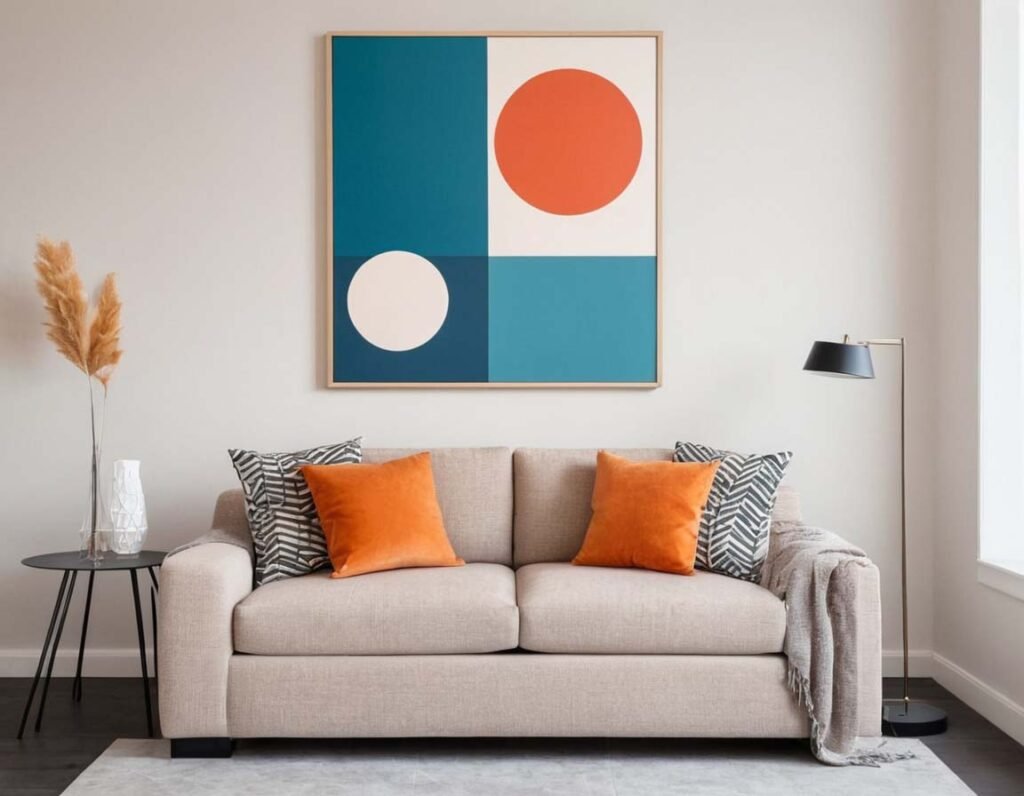
Another popular trend is creating gallery walls with smaller-sized geometric prints or paintings arranged together harmoniously on one large expanse of empty wall space. This arrangement allows for a mix of different styles and shapes, creating a visually dynamic display that showcases the homeowner’s unique taste and personality.
Social media platforms have undoubtedly played a significant role in the rise of geometric wall art. Platforms like Instagram and Pinterest provide endless inspiration, with users sharing their own creative arrangements and DIY projects. This exposure has made geometric wall art more accessible to individuals who may not have considered it before, leading to its increased popularity in modern home decor.
The Versatility of Geometric Art
One of the most appealing aspects of geometric wall art is its versatility. There are various styles and materials used in creating these pieces, allowing them to seamlessly fit into any home decor style.
When it comes to styles, there is an abundance of options available. From abstract designs with bold lines and shapes to intricate patterns inspired by nature or cultural motifs, there is something for every taste. Whether you prefer a more minimalist approach or enjoy vibrant colors and complex compositions, you can find geometric wall art that suits your personal aesthetic.
In terms of materials used, artists often employ different mediums such as canvas paintings, metal sculptures, or even woodwork to create their geometric masterpieces. Each material adds its own unique texture and dimensionality to the artwork while also allowing for customization based on individual preferences.
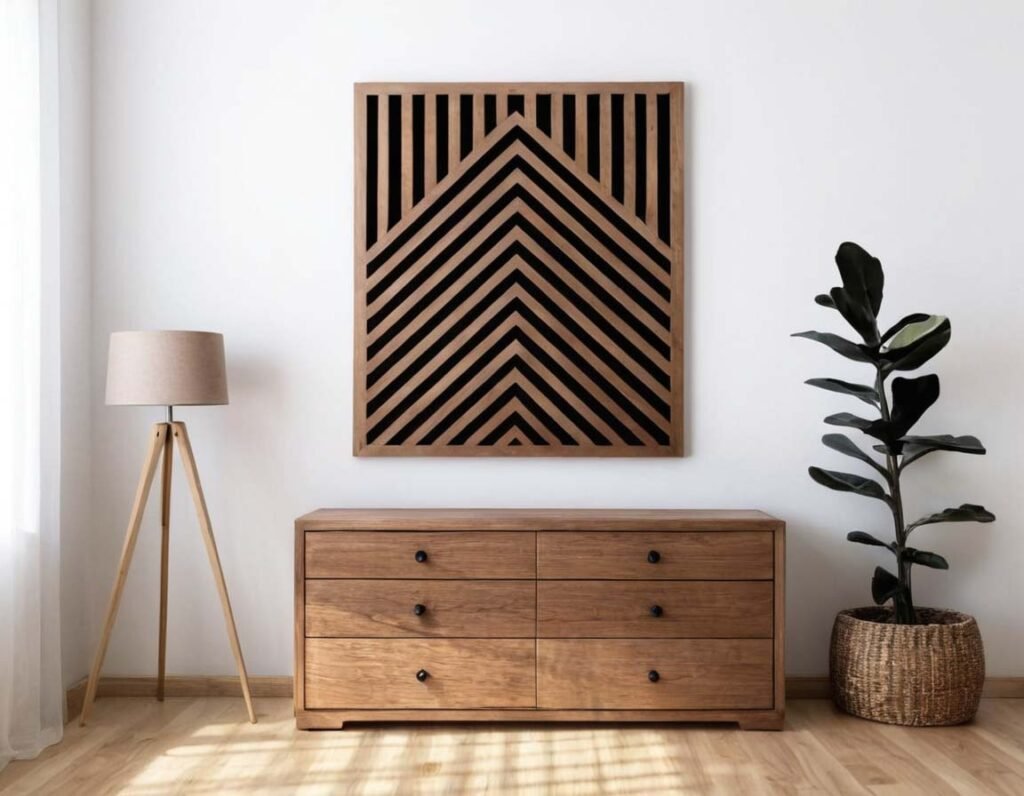
The versatility of geometric wall art extends beyond just style and materials – it can be incorporated into any home decor style seamlessly. Whether your space leans towards traditional elegance or contemporary minimalism, there is always room for a well-chosen piece of geometric wall art that complements your existing decor elements without overpowering them.
How to Choose the Perfect Geometric Wall Art for Your Home
Choosing the perfect piece of geometric art for your home requires careful consideration. Several factors should be taken into account when making this decision:
1. Consider the size and shape of the artwork in relation to your available wall space. A large, bold piece may work well as a statement artwork in a spacious living room, while smaller pieces or a collection of prints may be more suitable for smaller rooms or gallery walls.
2. Think about the overall color scheme and style of your existing decor. Geometric wall art should harmonize with the rest of the room rather than clash with it. Consider whether you want the artwork to blend in seamlessly or act as a contrasting focal point within the space.
3. Trust your instincts and choose something that resonates with you personally. Geometric wall art is not just about aesthetics; it should evoke emotions and reflect your individual taste and personality. Don’t be afraid to take risks and select something that truly speaks to you.
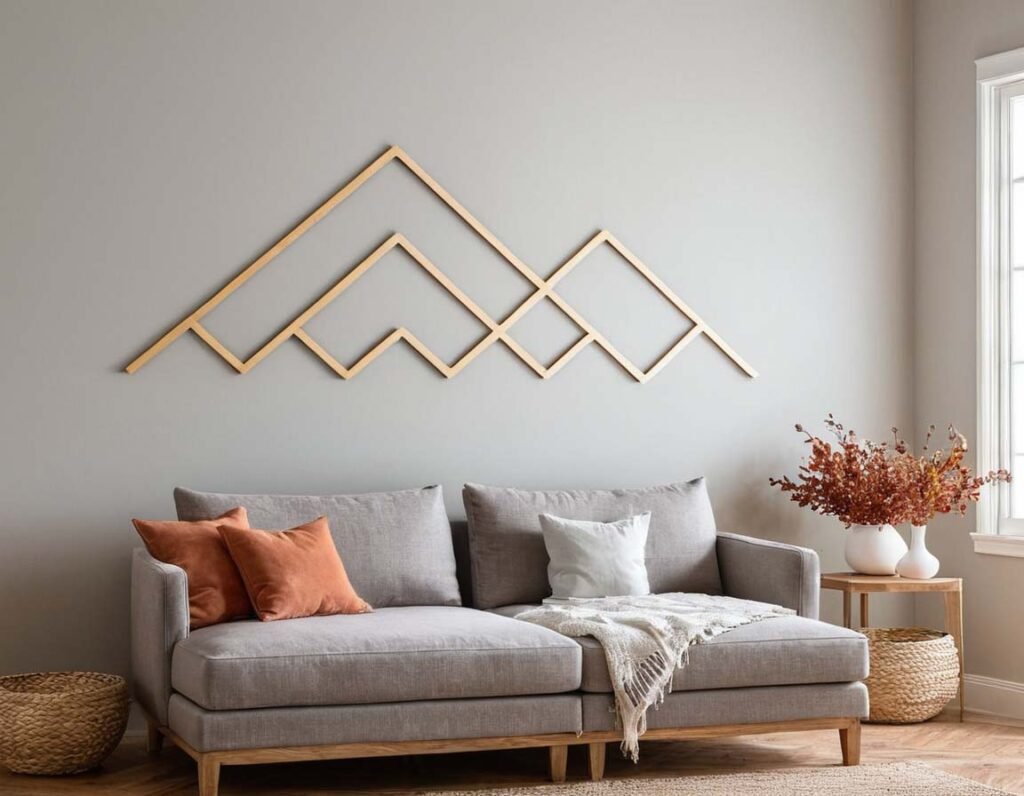
Matching geometric wall art with existing decor can be achieved through careful consideration of colors, patterns, and textures. For example, if your space features neutral tones and clean lines, consider opting for geometric wall art with subtle pops of color or intricate patterns to add visual interest without overwhelming the overall aesthetic.
The Different Types of Geometric Art
Geometric wall art encompasses various styles and forms that cater to different preferences:
Abstract geometric wall art is characterized by its use of bold lines, shapes, and colors arranged in non-representational compositions. These artworks often evoke emotions through their dynamic arrangements while allowing viewers to interpret them freely based on their own experiences.
Geometric patterns and shapes are another popular choice for those seeking a more structured approach to their home decor. These pieces often feature repetitive shapes such as triangles or hexagons arranged in symmetrical designs that create visually pleasing patterns on walls.
For those looking for three-dimensional artworks that truly stand out from traditional flat paintings or prints, geometric wall sculptures offer an exciting alternative. These sculptures can be made from various materials such as metal wire or woodwork intricately shaped into geometrical forms that protrude from the surface they are mounted on.
The different types of geometric wall art provide endless possibilities for homeowners to find the perfect piece that aligns with their personal style and preferences.
The Benefits of Using Geometric Wall Art in Your Home
Incorporating geometric wall art into your home decor offers several benefits beyond just aesthetics:
1. It enhances the overall aesthetics of your home by adding a touch of sophistication and visual interest. The clean lines and structured designs create a sense of order and balance within a space, elevating its overall appeal.
2. Geometric wall art can act as a focal point in a room. By strategically placing an eye-catching piece on an empty wall or above furniture, you draw attention to that specific area, creating a visually captivating centerpiece that anchors the entire space.
3. Geometric wall art adds depth and dimension to any room. The interplay between shapes and patterns creates an illusion of movement or perspective, making even small spaces appear larger or more dynamic.
How to Incorporate Geometric Wall Art into Your Home Decor
When incorporating geometric wall art into your home decor, placement is key:
Consider the size and scale of the artwork in relation to the surrounding elements. A large-scale piece may work well as a standalone statement artwork above a sofa or bed while smaller pieces can be grouped together on one large expanse of empty wall space for maximum impact.
Mixing different styles of geometric wall art can create an eclectic yet cohesive look within your home decor. Experiment with combining abstract pieces with more structured patterns or mixing different materials such as metal sculptures with canvas paintings for added texture and visual interest.
Creating a gallery wall is another popular way to incorporate multiple pieces of geometric wall art into one cohesive display. Arrange various sizes and shapes together on one large expanse of empty wall space using consistent spacing between each piece for balance.
The Impact of Geometric Wall Art on Your Home’s Aesthetics
Geometric wall art has the power to transform a space and elevate its aesthetics. By carefully selecting and placing the right piece, you can create a visually stunning environment that reflects your personal style.
For example, in a minimalist living room with neutral tones and clean lines, a large abstract geometric painting with bold colors can act as a striking focal point that adds vibrancy and energy to the space. The juxtaposition of the artwork against the simplicity of the room creates an intriguing visual contrast.
In contrast, in a more traditional or vintage-inspired bedroom, geometric wall art with intricate patterns or muted colors can add subtle elegance without overpowering the existing decor elements. The repetition of shapes or patterns within the artwork can also echo other design elements in the room such as textiles or furniture details for added cohesiveness.
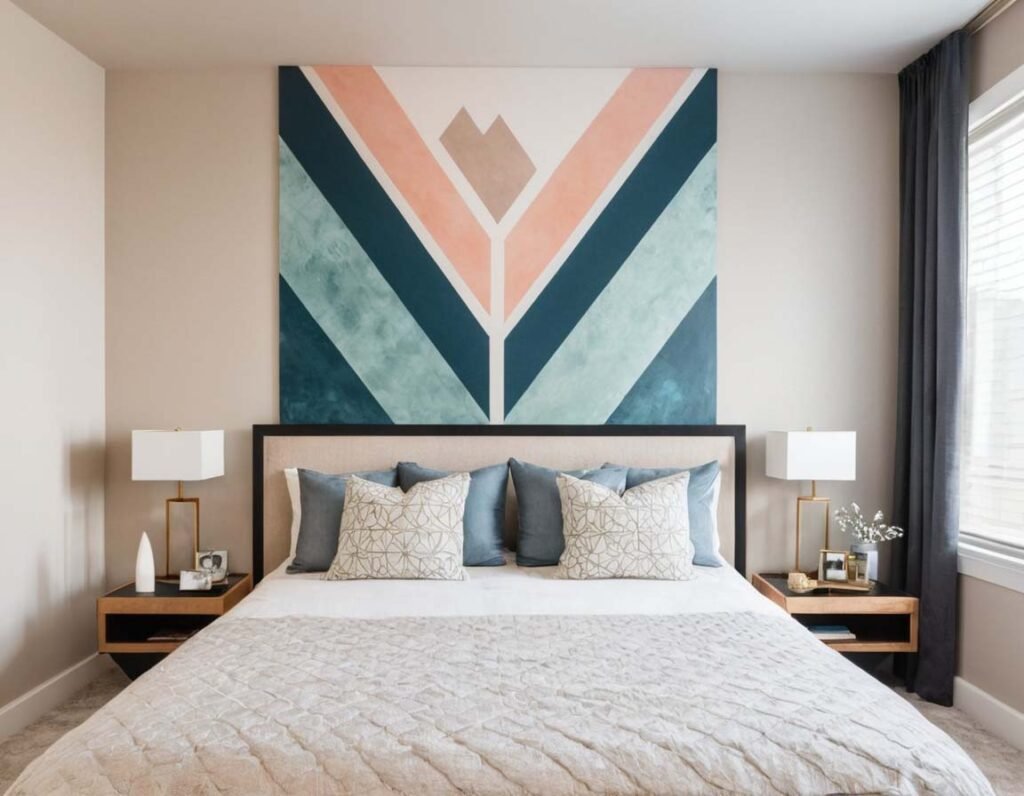
The psychological effects of geometric wall art should not be underestimated either. Certain shapes and colors have been shown to evoke specific emotions or moods. For example, sharp angles and vibrant hues may create feelings of excitement or energy, while softer curves and pastel shades may induce calmness or relaxation. Consider these factors when choosing your geometric wall art to create an atmosphere that aligns with your desired emotional response within each space.
The Role of Color in Geometric Wall Art
Color plays a crucial role in geometric wall art as it has the power to evoke different emotions and set various moods within a space:
When choosing a color for your geometric wall art, consider both personal preference and how it will interact with your existing decor elements. Warm tones like reds, oranges, and yellows tend to energize spaces while cooler hues like blues and greens promote calmness.
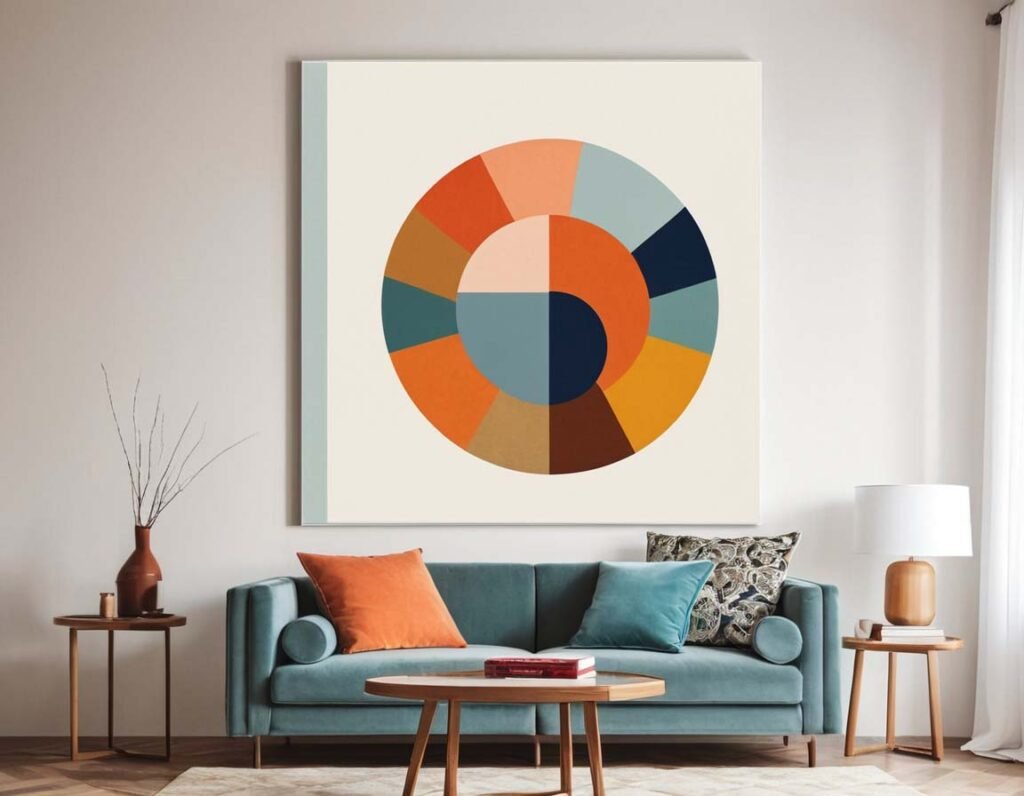
If you want your artwork to make a bold statement within your home decor scheme, opt for contrasting colors that stand out from their surroundings. For instance, if you have predominantly neutral-colored walls or furniture pieces, choose vibrant primary colors like reds or blues for maximum impact.
On the other hand, if you prefer a more harmonious and cohesive look, select colors that complement the existing color palette of your space. Consider using analogous colors (colors that are adjacent to each other on the color wheel) or monochromatic schemes (different shades of the same color) for a more subtle yet visually pleasing effect.
Color can also be used strategically to create a specific mood within a room. For example, cool blues and greens are often associated with tranquility and relaxation, making them ideal choices for bedrooms or spaces where you want to promote calmness. In contrast, warm tones like reds or oranges can add energy and vibrancy to areas such as home offices or living rooms.
The Best Rooms to Display Geometric Wall Art
Geometric wall art can be displayed in various rooms throughout your home:
The living room is an excellent space for showcasing large-scale geometric wall art as it often serves as the central gathering area in most homes. A statement piece above the sofa instantly draws attention and sets the tone for the entire room.
In bedrooms, geometric wall art can add personality and visual interest without overwhelming the space. Consider placing smaller pieces above nightstands or creating a gallery wall behind your bed for added impact.
The dining room is another area where geometric wall art can make a significant impact. Whether it’s one large piece above a buffet table or several smaller pieces arranged symmetrically on an empty wall, these artworks create an inviting atmosphere that complements mealtime conversations.
Home offices benefit from incorporating geometric wall art as well. These pieces not only enhance aesthetics but also inspire creativity and focus within your workspace. Choose artwork that resonates with you personally while promoting productivity in this area of your home.
DIY Geometric Wall Art: Tips and Tricks
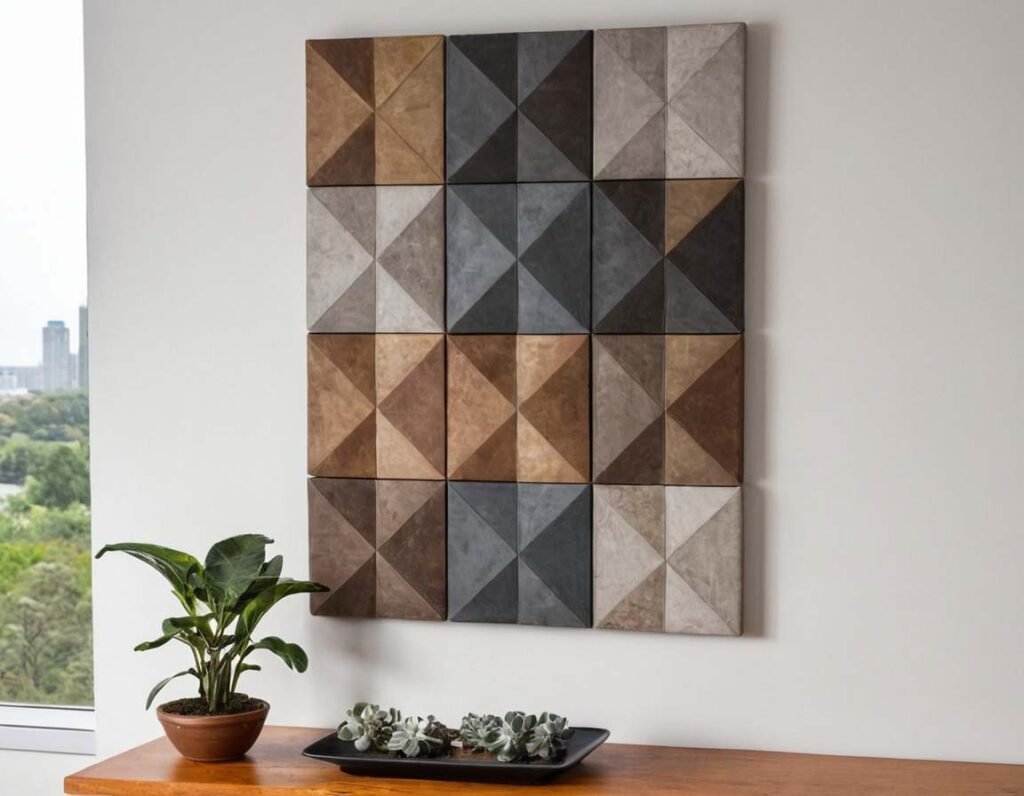
Creating your own DIY geometric wall art allows you to personalize your decor while unleashing your creativity:
Materials needed for DIY geometric wall art vary depending on the style and medium you choose. For canvas paintings, you will need acrylic or oil paints, brushes, and a canvas. If you prefer working with wood, gather materials such as a saw, sandpaper, paint or stain, and wooden boards.
Step-by-step instructions for creating your own geometric wall art can be found online or in various DIY books. Start by sketching out your design on paper to plan the composition and color scheme. Then transfer the design onto your chosen medium using stencils or freehand techniques.
Tips for creating a unique and personalized piece include experimenting with different shapes and patterns to find what resonates with you personally. Don’t be afraid to mix colors or materials for added texture and visual interest.
Remember that DIY projects take time and practice – don’t get discouraged if your first attempt doesn’t turn out exactly as planned. Embrace the process of learning new techniques while enjoying the satisfaction of creating something truly one-of-a-kind for your home.
The Future of Geometric Wall Art in Home Decor
As trends in home decor continue to evolve, so does geometric wall art:
One emerging trend is the fusion of traditional craftsmanship with modern geometric designs. Artists are incorporating age-old techniques such as macrame or pottery into their creations while infusing them with contemporary geometrical patterns for a unique blend of old-meets-new aesthetics.
Another future direction is the integration of technology into geometric wall art. With advancements in LED lighting technology, artists can create interactive pieces that change colors or patterns based on user input or environmental factors like sound or motion sensors.
Geometric wall art will also continue to evolve through experimentation with unconventional materials such as recycled plastics or sustainable fibers like hemp. This shift towards eco-friendly options reflects society’s growing awareness of environmental issues within all aspects of life, including home decor choices.
Conclusion
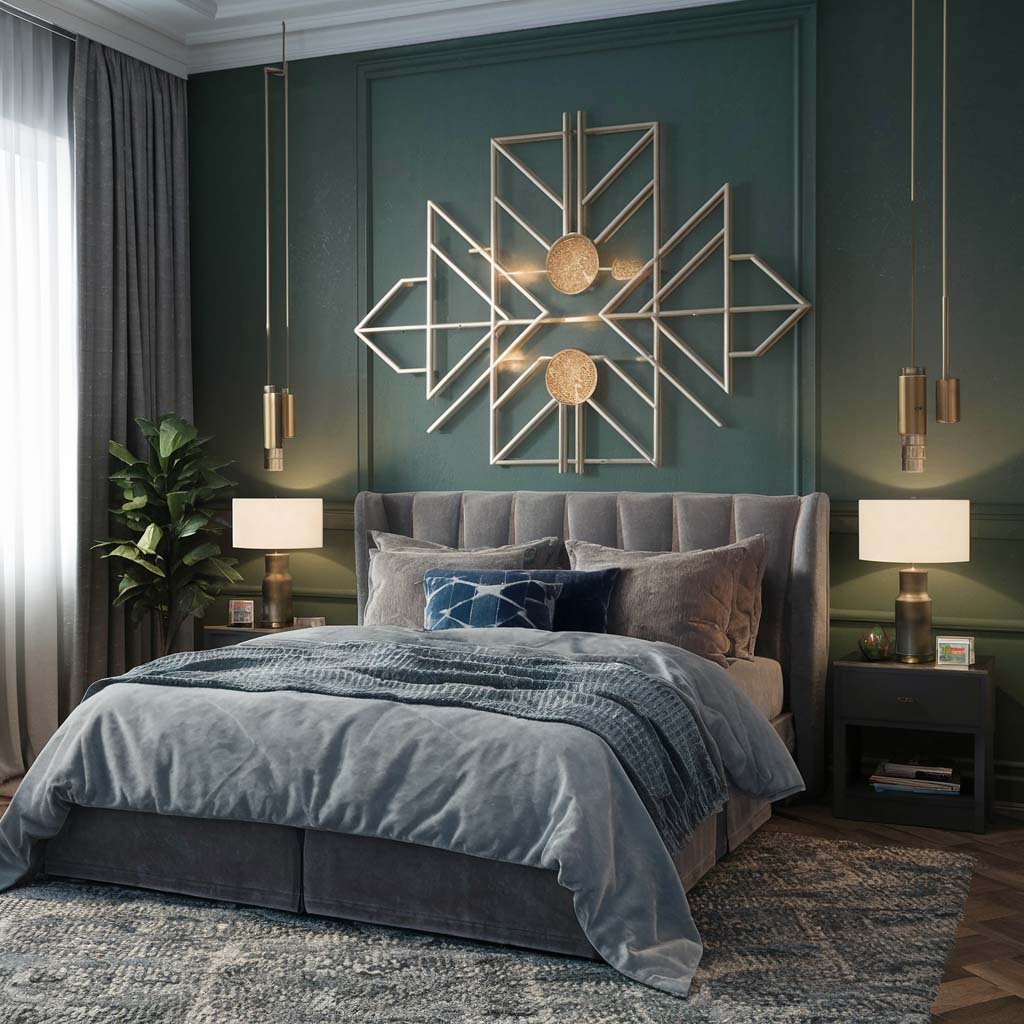
Whether purchased online or through local galleries or even created through DIY projects at home – art has become more accessible than ever before. The internet has revolutionized the way we buy and sell art, with online platforms offering a wide range of options for art enthusiasts to choose from. Local galleries also play a crucial role in connecting artists with buyers, providing a physical space for people to appreciate and purchase artwork. Additionally, the rise of DIY projects has empowered individuals to create their own art at home, allowing for a more personalized and unique artistic expression. Overall, the various avenues through which art can be obtained or created have made it easier for people to engage with and appreciate this form of expression.
RELATED POSTS
View all

